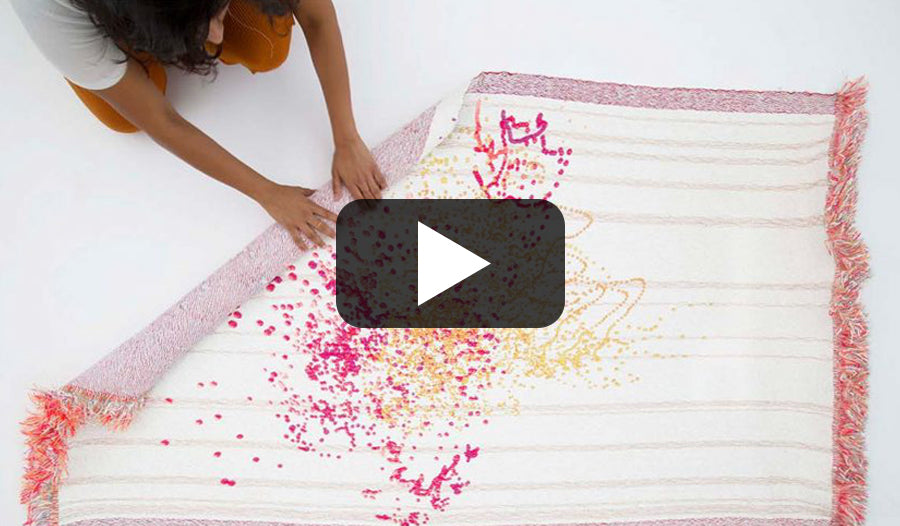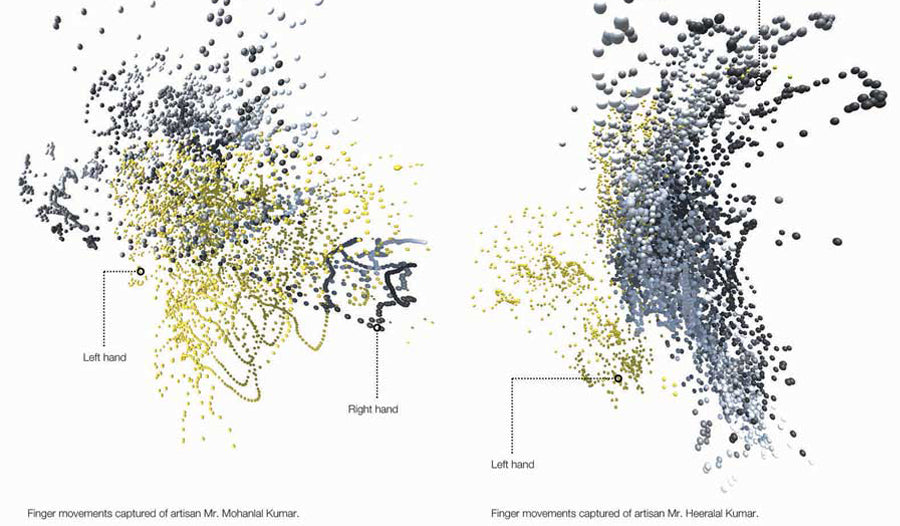
Kaarigari: Made in the TextielLab

This blog is a repost from TextielMuseum and TextielLab, about Rashmi Bidasaria’s work 'Kaarigari', in which she translates the hand movements of Indian craftsmen into patterns on colourful rugs. You can watch the video below or read the full article here.
Indian designer Rashmi Bidasaria has a background in architecture and product design and is developing further into spatial experiences, objects and artifacts. She enjoys exploring the possibilities of materials and combining them in new and different ways. This multidisciplinary approach leads to intriguing mixed pieces, which she strives to work on with people and communities, to give meaning to the textiles she makes.
The stories she tells with her designs are often inspired by her Indian roots. She sees her work as a platform through which to bring together different types of people: designers, researchers, technical experts and everyday people. This is certainly clear in her work 'Kaarigari' in which she was inspired by the pattern printers in Indian textile production, a 500-year-old craft that is gradually disappearing due to the rise of digital printing systems. These craftsmen work 10 hours a day, constantly performing the monotonous and repetitive acts of printing by hand.

Bidasaria recognized that each craftsperson has a unique ‘handwriting’ in their printing movements, that in some ways can be described as a dance. She decided to make these individual actions visible and to convert them into patterns, for which she experimented with light and long exposure photography, and other techniques. In this way she hit upon meticulous patterns where even the slightest movements of fingers can be ascertained. In the image below you can see how the yellow dots represent the movements of the left hand and the blue dots represent those of the right hand. The larger the dot, the longer the printer held his hand there. In the patterns you can see the speed and skill of each movement, or their signature.

She brought the patterns to the TextielLab, the specialist workshop of the TextielMuseum. Together with the weaving specialists, she developed a new technique in which a combination of natural and recycled synthetic yarns give the fabric a dynamic texture, permeability and depth – in line with the work and skills of a hand printer.
In her work, Bidasaria beautifully depicts the relationship between man and machine. The fact that there is an overlap in the production processes of the hand printers and the weaving machine reinforces the story of 'Kaarigari' for the designer. In her own words: 'It was encouraging to see the narrative from India travelling to the Netherlands, and to have conversations with craftsmen and their work through a piece of woven textiles. With this work I want to give recognition to the hardworking craftsmen by emphasizing their individuality in their everyday repetitive actions. I hope that younger generations will understand the value of their craft.'

This project was developed at the Royal College of Art. The textile works were produced and financed by the TextielMuseum and TextielLab. Rashmi Bidasaria's work was on display at the London Design Festival 2020 and Hebei International Industrial Design Week 2020.

1 comment
Re the carpets; Very innovative and beautiful concept…
Re the hand prints; i love these prints and hope that this craft never dies. It is so rich in labor and human precision, however, the hours of work are too long for these crafts people ..